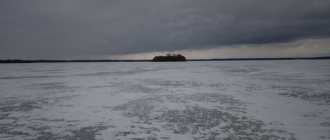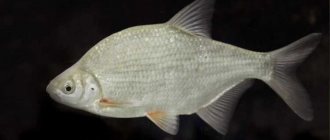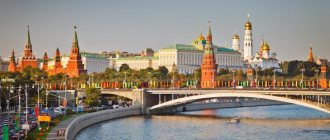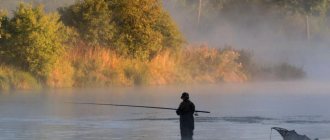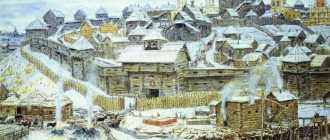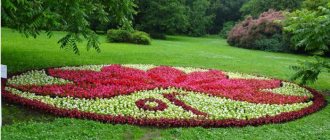The most beautiful and picturesque places, rich in unique vegetation, inhabited by rare species of animals and birds, are located in especially inaccessible areas of the country. In the southwestern part of the Kola Peninsula, washed by the waters of the White and Barents Seas, beyond the Arctic Circle, there is Lake Imandra, amazingly beautiful and the largest in the Murmansk region.
Geographical data
In the European part of the Subarctic, where Lake Imandra is located, it is the largest water area. The bizarrely indented coastline with peaty, marshy and sandy soil structure is about 750 km in total. Rocky and boulder shores form the bulk of the relief and periodically give way to sandy and pebble beaches in numerous bays.
Located in the western part of the Khibiny mountain range on the Kola Peninsula, Lake Imandra has impressive parameters. The total area of the water basin is 876 square meters. km, while the length of the lake at some points reaches 109 km. The purest water with unique transparency parameters allows you to see the depth of Lake Imandra at 11 m, especially on a bright sunny day and calm weather. The maximum explored depth is about 67 m.
Geographically, the territory of the reservoir, which belongs to the Lapland Nature Reserve, is divided into three large parts: northern, central and western. The entire surface is strewn with many small and medium-sized islands: there are more than 80 of them on the entire area of Lake Imandra. Since ancient times, the shores of this geographical object have provided shelter for people, and now they have become the site for the construction of large cities, the most famous of which are Khibiny, Monchegorsk and Imandra. More than 20 large and medium-sized rivers fill the lake, and its source is the Niva River.
Description of Lake Imandra
The city of Monchegorsk itself is located on the shore of the lake. Lumbolka, and on the other side is Monche. This is the lip of Lake Imandra. It has a rather complex lobe shape with a large number of bays and bays (they are very convenient for parking), as well as a large number of small islands. The total territory of the reservoir is 876 square meters. km. The greatest depth of Lake Imandra is 67 meters (average -19 m).
The reservoir is divided into three parts:
- northern – Bolshaya Imandra: area 328 sq. km, length - approximately 55 km. and width within 3-5 km;
- central – Iokostrovskaya Imandra: area 351 sq. km, width approximately 12 km, width of the narrowest point 700 meters;
- western – Imandra Babinskaya: area 133 sq. km.
The lake has amazingly clean and transparent water. The bottom is visible even from a depth of 11 meters. The reservoir is fed mainly by rain and snow. In its fresh waves there is a variety of fish: perch, vendace, salmon, grayling, pike, brown trout, whitefish. The lake freezes in early November and opens only in mid-summer (June-July).
The Legend of Imandra
According to legend, Imandra is a girl who was the daughter of a hunter who lived on the shore of a very small lake. The girl was incredibly pretty, had excellent command of a bow and arrow, and successfully hunted with her father. The beauty's loud laughter attracted the attention of a young hunter passing by, who was so fascinated by the sound that he went to look for Imandra. Carried away by the search for the mysterious stranger, the young man completely forgot how dangerous the rocky shores and steep cliffs are. He fell down and died, crashing on the coastal rocks. The darkened Imandra for a long time asked the gods to bring the beautiful hunter back to life, but they left her pleas unanswered. Then, out of despair and grief, the girl threw herself into the waters of the lake, which accepted her sadness, parted and became huge. And the deceased hunter and Imandra turned into numerous islands on the blue surface of the reservoir.
Story
It is believed that the reservoir was first discovered in 1880 by scientist N. Kudryavtsev during a geological expedition of the Russian geographical community. There are several versions of the source name. According to one of them, the name comes from the local dialect, where “inn” means “ice” and “mandera” means “mainland”. Another option is that the word “imandra” is translated from Sami as a lake with a winding coastline.
Local residents tell a legend about this unusual name of the lake. According to legend, this was the name of a girl who lived on the shore of a reservoir. After the death of her beloved, she threw herself into the waters of Imandra.
© Alexander Skorokhod
Literature
Interesting facts about Lake Imandra are associated with the travels through this magical land of the Russian writer Mikhail Prishvin, who was amazed by the beauty of his untouched native nature. The traveler's notes compiled a diary of wanderings across the expanses of Russia. A separate addition was the book “Behind the Magic Kolobok,” which reflected all the writer’s impressions of the most beautiful pearl of the Russian North, where he vividly describes the unique way of life of the Laplanders, admiring the originality and mystery of the descendants of the Kalevala heroes.
Plants of Lake Imandra
The flora near Imandra is rich and diverse. Tundra and taiga, closely intertwined, create a unique and complex ecosystem. Pine and spruce forests with a predominance of Finnish spruce are interspersed with birch groves, thickets of juniper and rowan. The dense undergrowth is formed by many types of berries, mosses and lichens.
Resin moss, characteristic of the tundra, actively develops on peat and sandy soils near Lake Imandra. The abundant flora of these wonderful places contains species listed in the Red Book. Among such plants are lake sedum, bulbous calypso, cinnabar-red cotoneaster, lead-green sedge, and sea sedge.
Fauna of Imandra
The rich flora of Imndra provides shelter for numerous species of animals, including especially rare and protected ones. On the territory of the Lapland Nature Reserve, where Lake Imandra is located, a large population of reindeer, as well as moose, foxes, brown bears, martens, hares and a huge number of different species of rodents, live in natural conditions. The forests are home to partridges and black grouse, and there are large populations of rare bird species such as the golden eagle, osprey and white-tailed eagle. The expanses of the reservoir have become home to screaming swan, diving ducks and geese.
Like many northern waters, Lake Imandra is home to numerous representatives of ichthyofauna. There are a variety of game fish here, such as pike and char, grayling, whitefish, smelt and lake minnow.
Flora and fauna
The harsh climate of the Kola Peninsula did not prevent flora and fauna from establishing themselves in the Imandrovo subarctic water expanses. In summer, the water almost does not warm up due to the short period without ice crust and the low level of peat in the soil.
Imandra is rich in fish: fishing lasts all year round. The lake is inhabited by whitefish, salmon, vendace, char and pike. With a spinning rod, fishing rod and other equipment, you can fish from the shore and boat. In addition, the Khibiny Mountains attract with their amazing nature and beautiful landscapes. In summer, Lake Imandra is not overgrown with vegetation. Therefore, the only thing that can hinder the fishermen is the bottom with numerous snags: the banks of the reservoir are covered with pine forests. They are home to wild animals: martens, hares, wolverines, wolves, brown bears, moose, reindeer. Berries grow in autumn.
In summer and winter, an annual 100-kilometer sailing regatta takes place on Lake Imandra near Monchegorsk. To the west of the lake is the Lapland Nature Reserve.
Tourism
Lovers of recreation in wild conditions, fans of winding mountain paths and adherents of extreme sports have chosen the shores of Imandra for their stops, and the cities located on the shores of the lake actively help attract tourists and travelers. You can comfortably stay in a cozy hotel in Monchegorsk and, using the services of a professional guide, get to the most remote areas near Lake Imandra in the Murmansk region, and also go to the Nivsky Cascade - the largest reservoir of the Kola Hydroelectric Power Station.
The incredible beauty of the untouched nature of the polar region, the purity of the air and the opportunity to break away from civilization and everyday worries, to be alone with oneself and nature attract tourists from all over Russia and the world. In summer, when weather conditions are most optimal for living, many tent camps are built on the wooded shores and clean beaches of Imandra.
Holidays on the lake
The surrounding area of the reservoir is a popular tourist destination. In addition to fishing, active recreational activities are common on Imandra. Lovers of mountain trails, wild conditions, and extreme sports come here. You can stay on the shore of the reservoir at local recreation centers, camping parks, hotels and inns. Also on the coast, vacations for “savages” are popular.
Tourist programs in the vicinity of the reservoir are a common type of recreation on Imandra. As part of excursion tours, it is possible to visit the Niva Cascade of reservoirs. In the region of the Khibiny Mountains, tourist routes have been organized near the reservoir. The further along the trails, the more beautiful the view of Lake Imandra from the heights of the Khibiny Hills.
Every year in April, an international competition under winter sails takes place on the ice of this reservoir on a 100-kilometer course. In the area of large cities and towns, active sports are common: kayaking, rowing slalom and freestyle. Tourist rafting is carried out along the rivers flowing into the reservoir. For vacationers, trips on yachts, boats, kayaks and catamarans are organized here.
A husky park has been opened on the shore of Lake Imandra. In winter, when the reservoir is covered with ice, they organize walks in a husky sled.
© Vyacheslav Lobanov
Extreme tourism
Those who want to get an adrenaline rush choose rafting from 2 to 6 categories of difficulty along numerous mountain rivers with dangerous rapids, difficult and relief routes. Testing yourself and your body's abilities while away from civilization is the best way to escape from a comfortable but boring everyday life.
Among the popular and moderately dangerous entertainments, kite surfing has been actively developing in recent years. Riding a board with a paraglider gives you the exhilarating feeling of flying through the waves.
More relaxed travelers can choose sailing yachts and boat trips. The vast territory of Imandra may require several days to cover the entire route and will allow you to enjoy the cleanest air and quaint coastal landscapes.
Ecology
Active human activity and the increasing flow of tourists every year increase the popularity of domestic tourism, but, unfortunately, they are slowly killing Imandra.
The results of the irrational use of small vessels were a decrease in the transparency and quality of water, the appearance of oil stains and the gradual extinction of numerous species of fish inhabiting the lake. The population decline over the past years has reached catastrophic proportions.
Coasts that are actively subject to development lose their uniqueness, vegetation dies, and forest inhabitants move away from humans. Forest fires destroy forest reserves and deprive animals of their natural habitats. An increase in the number of industrial enterprises leads to an increase in the volume of harmful emissions, which has a detrimental effect on the ecosystem of Lake Imandra and the Kola Peninsula.
Irrational use of commercial fish species leads to a decrease in their numbers and the impossibility of restoring the population naturally.
The abundance of tourists, thanks to which the active development of the infrastructure of nearby cities is taking place, leads to littering of the water area and the extinction of flora and fauna.
Regional authorities have been making attempts for several years to stop the extinction of the lake due to human fault. Some particularly hazardous enterprises were liquidated, and entry by cars and the use of diesel motor boats was limited. But without the conscious desire of every tourist who arrived on the shores of Lake Imandra, and residents of nearby cities, it is impossible to save the unique ecosystem. While admiring the beauties of nature today, it is necessary to think and do so that our descendants will be able to enjoy this amazing pearl of the Kola Peninsula in its natural and pristine form.

